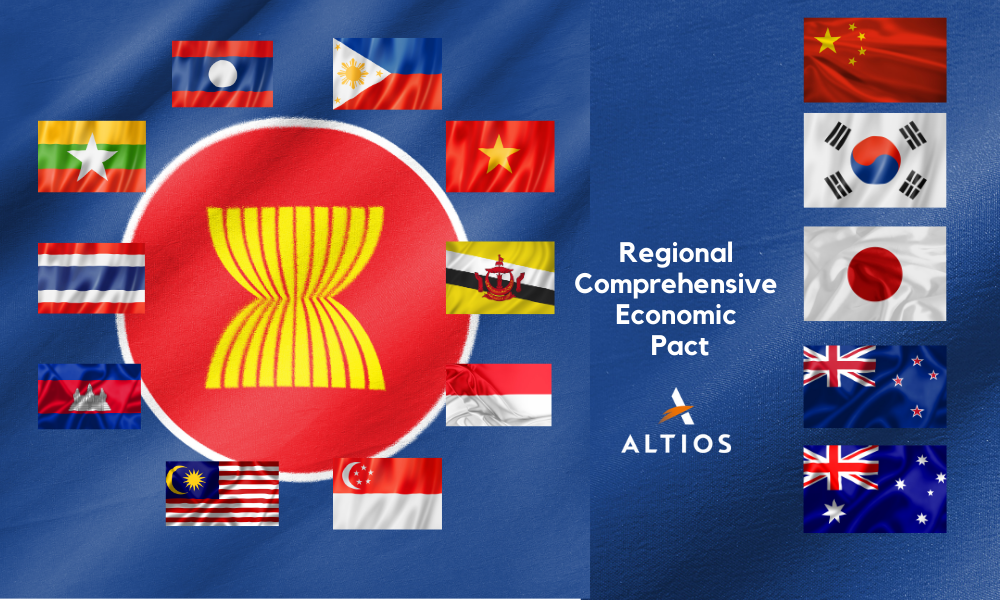The Regional Comprehensive Economic Partnership: What does it mean?

Altios shares our take on the RCEP and what this means for us and our ecosystem.
The Regional Comprehensive Economic Partnership (RCEP), said to be the biggest trade agreement to date, extends existing trade agreements signed between the ten countries of ASEAN (Singapore, Indonesia, Philippines, Vietnam, Malaysia, Thailand, Laos, Myanmar, Brunei, Cambodia ) and combines them into a multi-lateral agreement with Australia, New Zealand, South Korea, Japan and China. This deal represents around 25% of global international trade and 30% of the global GDP in value, reaching population of 2.3 billion individuals.
Details of the deal have not been published yet but will include bilateral tariffs, import taxes reductions, less constraints on FDIs, ease on regulatory aspects to export and/or invest within the RCEP area, and strengthen regional supply chains. These clauses will be greatly applicable in areas such as trading, e-commerce, intellectual property, test certifications, and technological cooperation.
The deal aims to promote multilateralism and free trade in Asia, and balance trade exchanges within the region. Some may also argue that this is a geopolitical move on China’s end to send a strong signal to the U.S.
There are however still some questions left unanswered: will India give in and sign the agreement and how will Australia-China trade relations develop in the future? India had pulled out of negotiations last year but RCEP members said they remained open to India’s accession later. The country is currently protecting its domestic industry as lower tariffs could impact local producers, especially those in agriculture.
As for Australia and China, experts says the RCEP won’t make any difference regarding trade tension between Australia & China, and we will have to wait for further detailed measures to judge since tariffs between two countries are already low.
ALTIOS believes that the RCEP would greatly help their clients due to the further strengthening of the Asia’s position as the global economic center of gravity and development of intra-Asian trade. This will give more accessibility to regulated or highly taxed industry sectors in China, sign that China is opening up to multilateralism. Furthermore, this will create opportunities for strong national industries in the region like cosmetics and F&B in Australia and promote these industries within the RCEP region. Country specifications can be organized to optimize regional trade, as China will open up to import more food and commodities providing great opportunity for ASEAN countries, and also open up its automotive sector, which is promising for Japan and Korea.
The full article, as reported by the Financial Times, can be accessed here.


